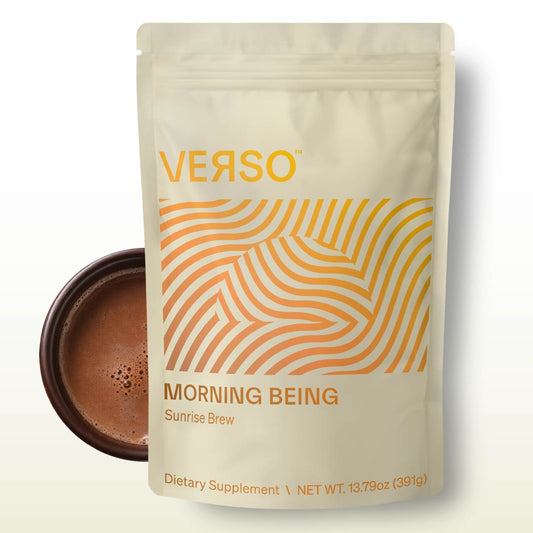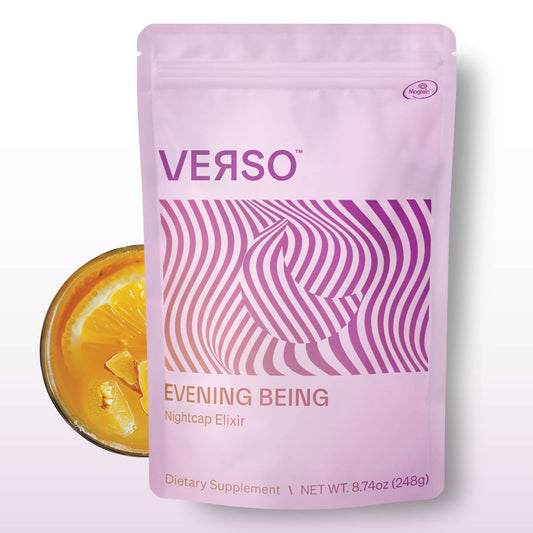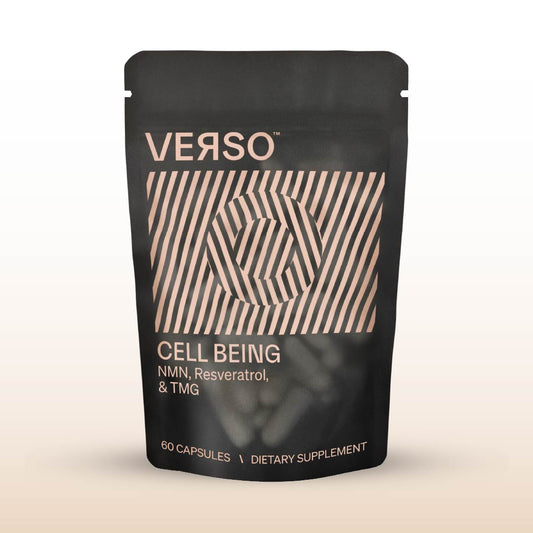NMN has progressively increased in popularity over the past decade, but while 10 years normally seems like quite a long time, it’s actually a very short period of time when it comes to conducting scientific research. That’s because anytime a new compound starts to garner a lot of attention, it’s necessary to first conduct experiments on animals to demonstrate its safety and efficacy in a living subject before moving onto human trials.
NMN wasn’t tested in a human research study until 2016, but the results were so promising and positive that since it concluded in 2019, the total number of NMN human clinical trials has surged exponentially [1]. In this article, we’re going to summarize the main findings of these studies so that we might determine if there is a general consensus among scientists based on the empirical data.
Treating chronic diseases
As people age, their risk for acquiring chronic diseases continually rises to such a degree that the most common chronic illnesses (such as type 2 diabetes, cardiovascular disease, kidney disease, and neurodegenerative diseases) are often referred to as age-related disorders [2]. It’s for this reason that NMN’s potential role in preventing or reversing these disorders has become a major point of interest for researchers.
Type 2 Diabetes
The mechanism in which type 2 diabetes affects people is very simple – as a result of poor diet and lack of exercise, the body’s sensitivity to insulin declines. This leads to a myriad of other associated problems, such as increased risk of stroke or heart attack [3]. Then, since the body has built up such an abnormal tolerance to insulin, people are forced to treat it by administering extra insulin to themselves via subcutaneous injections. Not only is this inconvenient and costly over time, but it’s also only a band-aid to the problem, not a true fix.
NMN, however, may be capable of treating the root cause of type 2 diabetes by increasing the muscle’s sensitivity to insulin and simultaneously increasing the amount of insulin that gets secreted into our bloodstream [4], [5]. In a study conducted on a group of pre-diabetic, post-menopausal women who were medically classified as obese or overweight, NMN supplementation was observed to remodel the genetic expression of multiple insulin-stimulated glucose metabolic pathways in their skeletal muscle tissue. It was through this genetic remodeling that muscular insulin signaling and sensitivity were significantly increased for these women [6].
Researchers estimated that this increase in insulin sensitivity could be metabolically equivalent to a 10% loss in body weight, even without actually losing any weight. Impressively, these results were achieved after only 10 weeks of supplementing with 250 mg NMN per day, demonstrating the possibility for people to see serious improvements in their health after relatively short periods of time, and without massive doses of NMN. Furthermore, zero side effects were reported for all patients who participated in this study [6].
In contrast, other studies have failed to replicate these results when administering nicotinamide riboside (NR) in humans, even though several rodent studies successfully increased muscle sensitivity to insulin with NR supplementation [7], [8], [9], [10], [11]. The exact explanation for this discrepancy is unknown, but it shows the importance of validating findings from animal studies by replicating them in humans.
Cardiovascular Diseases
Over the past decade, researchers have started to make notable progress in investigating the reasons that explain why we have an increased risk of developing cardiovascular diseases as we age. Excitingly, NAD+ concentrations appear to be an emerging front-runner that can explain why this is the case.
Donato et al. showed that as SIRT1 protein activation in the arteries declines due to a decrease in NAD+ concentration, there was also a decrease in the dilation capabilities of human vascular endothelial tissue. Put more simply, subjects were found to have stiffer arteries and veins when vascular SIRT1 expression was diminished and NAD+ was less abundant [12].
Atherosclerosis, one of the most common cardiovascular diseases today, is characterized by the buildup of plaque and cholesterol in arteries, which then hardens the vessels and obstructs blood flow. When blood flow is hindered in such a way, people are put at significantly higher risks for acquiring hypertension, hyperlipidemia, blood clots, heart attacks, ischemic heart failure, and ischemic strokes [13], [14].
With this in mind, multiple studies have been able to show that cardiovascular atherosclerosis can be directly combatted by increasing NAD+ concentrations and SIRT1 protein activation in human arterial tissue. This mechanism protects against the hardening of our vasculature, which then works to ward off the onset of countless chronic diseases [12], [14], [15].
Kidney Diseases
Chronic kidney disease (CKD) and heart disease go hand in hand. The heart pumps the blood through the body, and the kidneys filter the blood. Therefore, given that these two major organ systems function in tandem, it also makes sense that NAD+ plays a similar role in both systems.
Kidneys are extremely metabolic organs, meaning that they demand a massive amount of energy to operate. ATP is the molecule used as energy to drive metabolic reactions, and NAD+ is the main coenzyme consumed during ATP production in the mitochondria. When kidney cells reach a point in their lifecycle where they can no longer produce enough ATP to sufficiently sustain the body’s demand on the organ as a result of declining NAD+ concentrations, the risk of developing chronic kidney disease continually increases and compounds over time. Once CKD takes hold in a patient, the severity of the disorder will progress through stages until it reaches the final stage of total kidney failure (if left untreated).
It has been well documented that people with CKD, compared to those of the same age without CKD, have significantly decreased NAD+ concentrations in the cells of their kidney tissue [16], [17], [18]. NMN administration, however, has been shown to increase NAD+ concentrations to a degree that’s effective in preventing and treating CKD. Kidneys are highly complex and perform a vast range of diverse functions, which means that there are countless aspects of renal health that can decline at any time. By supplementing with NMN to boost NAD+ production, there’s potential for a multifaceted improvement of overall renal function and health [16].
Neurodegenerative Diseases
When we think of neurodegenerative diseases, our minds probably first go to Alzheimer’s disease and dementia. Although research has yet to find an official cure for these disorders, recent studies investigating the impact of NMN supplementation on cognitive dysfunction have yielded some promising results.
Neuronal brain health hinges greatly on mitochondrial biogenesis and the overall quality of mitochondrial function in the brain [19]. Additionally, a hallmark of Alzheimer’s disease is the accumulation of tau proteins and beta-amyloid plaques in the brain. Fang et al. were able to show that increasing neural NAD+ concentrations through NMN supplementation significantly reduces the accumulation of dysfunctional mitochondria, which then lessens the burden of tau and beta-amyloid plaque buildups, reduces neuroinflammation, and improves the quality of learning and memory [20], [21].
Similarly, in neurons affected by Parkinson’s disease, researchers detected significant mitochondrial dysfunction and a 30% decrease in NAD+ concentrations compared to individuals of the same age [21], [22]. In a separate study conducted on nearly 900 Parkinson’s patients, it was found that boosting NAD+ levels yielded positive symptom improvements for about 80% of the participants [23].
Safety of NMN in Human Trials
NMN is a truly incredible compound that shows promise in treating some of the deadliest diseases that burden the general population today. Throughout the human clinical trials, NMN has shown an ability to improve human health while being a safe and largely side-effect-free intervention. By now, multiple articles have been published that conducted multicenter, randomized, double-blind, parallel design, placebo-controlled studies, all of which tested the safety of NMN administration at different doses in people across all ages and between both sexes [2], [3], [15], [24], [25], [26], [27], [28], [29].
The highest dose tested in any human study was 1200 mg daily, and there were zero side effects reported [29]. However, this large of a dose may not be required to yield a significant rise in NAD+ levels. Studies have shown that 250 mg of NMN taken orally on a daily basis successfully increases NAD+ levels [26]. Moreover, doses of 300 mg taken every day for a year were tolerated with equal success and no side effects [30].
The general consensus of all human research conducted thus far confidently indicates that NMN is an extremely safe supplement capable of providing incredible benefits. Additionally, when examining the preliminary results of the several clinical trials currently in the process of being published, the conclusion is still the same: NMN supplementation significantly boosts NAD+ concentrations with no observable side effects or deleterious impacts on health, which allows for a multifaceted improvement to people’s health and longevity [3].

Author: Ethan Iles
Ethan is a medical student at the Chicago Medical School of Rosalind Franklin University. Upon graduating, he plans on practicing medicine as an emergency physician with a specialty in public health.
Works Cited
- Irie J et al., Effect of oral administration of nicotinamide mononucleotide on clinical parameters and nicotinamide metabolite levels in healthy Japanese men. Endocr J 67, 153–160 (2020). doi: 10.1507/endocrj.EJ19-0313.
- Igarashi M, Yamauchi T. Insight into the application of nicotinamide mononucleotide (NMN) to age-related disorders. J Cell Mol Immunol. 2023;2(1):9-13.
- Song Q, Zhou X, Xu K, Liu S, Zhu X, Yang J. The Safety and Antiaging Effects of Nicotinamide Mononucleotide in Human Clinical Trials: an Update. Advances in Nutrition 2023;14(6):1416-1435. Doi:10.1016/j.advnut.2023.08.008.
- Yoshino M et al. Nicotinamide mononucleotide increases muscle insulin sensitivity in prediabetic women. Science. 2021;372:1224-1229. Doi:10.1126/science.abe9985.
- Yamane T, Imai M, Bamba T, Uchiyama S. Nicotinamide mononucleotide (NMN) intake increases plasma NMN and insulin levels in healthy subjects. Clinical Nutrition ESPEN. 2023;56:83-86. Doi:10.1016/j.clnesp.2023.04.031.
- Yoshino J, Baur JA, Imai S. NAD+ intermediates: The biology and therapeutic potential of NMN and NR. Cell Metab. 2018;27:513–528. DOI:10.1016/j.cmet.2017.11.002.
- Katsyuba E, Romani M, Hofer D, Auwerx J. NAD+ homeostasis in health and disease. Nat Metab. 2020 Jan;2(1):9-31. DOI: 10.1038/s42255-019-0161-5.
- Cantó C et al. The NAD(+) precursor nicotinamide riboside enhances oxidative metabolism and protects against high-fat diet-induced obesity. Cell Metab. 2012 Jun 6;15(6):838-47. DOI: 10.1016/j.cmet.2012.04.022.
- Dollerup OL et al. A randomized placebo-controlled clinical trial of nicotinamide riboside in obese men: safety, insulin-sensitivity, and lipid-mobilizing effects. Am J Clin Nutr. 2018 Aug;108(2):343-353. DOI: 10.1093/ajcn/nqy132.
- Elhassan YS et al. Nicotinamide Riboside Augments the Aged Human Skeletal Muscle NAD+ Metabolome and Induces Transcriptomic and Anti-inflammatory Signatures. Cell Rep. 2019 Aug 13;28(7):1717-1728.e6. DOI: 10.1016/j.celrep.2019.07.043.
- Remie CME et al. Nicotinamide riboside supplementation alters body composition and skeletal muscle acetylcarnitine concentrations in healthy obese humans. Am J Clin Nutr. 2020 Aug 1;112(2):413-426. DOI: 10.1093/ajcn/nqaa072.
- Donato et al. SIRT-1 and vascular endothelial dysfunction with aging in mice and humans. J Physiol. 2011;589(18):4545-4554. DOI: 10.1113/jphysiol.2011.211219.
- Barquera S et al. Global Overview of the Epidemiology of Atherosclerotic Cardiovascular Disease. Archives of Medical Research. 2015;46(5):328-338. DOI: 10.1016/j.arcmed.2015.06.006.
- Kane AE, Sinclair DA. Sirtuins and NAD+ in the Development and Treatment of Metabolic and Cardiovascular Diseases. Circulation Research. 2018;123:868–885. DOI: 10.1161/CIRCRESAHA.118.312498.
- Katayoshi T, Uehata S, Nakashima N et al. Nicotinamide adenine dinucleotide metabolism and arterial stiffness after long-term nicotinamide mononucleotide supplementation: a randomized, double-blind, placebo-controlled trial. Sci Rep. 2023;13(2786). DOI: 10.1038/s41598-023-29787-3.
- Morevati M et al. Roles of NAD+ in Acute and Chronic Kidney Diseases. International Journal of Molecular Sciences. 2023; 24(1):137. DOI: 10.3390/ijms24010137.
- Ralto KM, Rhee EP, Parikh SM. NAD+ homeostasis in renal health and disease. Nat Rev Nephrol 2020;16:99–111. DOI: 10.1038/s41581-019-0216-6.
- Curran CS, Kopp JB. The complexity of nicotinamide adenine dinucleotide (NAD), hypoxic, and aryl hydrocarbon receptor cell signaling in chronic kidney disease. J Transl Med 2023;21(706). DOI: 10.1186/s12967-023-04584-8.
- Wang X, He H, Xiong X, Zhou S, Wang WW, Feng L, Han R, Xie CL. NAD+ in Alzheimer’s Disease: Molecular Mechanisms and Systematic Therapeutic Evidence Obtained in vivo. Front. Cell Dev. Biol. 2021;9. DOI: 10.3389/fcell.2021.668491.
- Fang EF, Hou Y, Palikaras K et al. Mitophagy inhibits amyloid-β and tau pathology and reverses cognitive deficits in models of Alzheimer’s disease. Nat Neurosci 2019;22:401-412. DOI: 10.1038/s41593-018-0332-9.
- Lautrup S, Sinclair DA, Mattson MP, Fang EF. NAD+ in Brain Aging and Neurodegenerative Disorders. Cell Metabolism. 2019 Oct 1;30:630-655. DOI: 10.1016/j.cmet.2019.09.001.
- Sison SL, Ebert AD. Decreased NAD+ in dopaminergic neurons. Aging. 2018;10:526–527.
- Birkmayer JG, Vrecko C, Volc D, Birkmayer W. Nicotinamide adenine dinucleotide (NADH)--a new therapeutic approach to Parkinson's disease. Neurol Scand Suppl. 1993;146:32–35. DOI: 10.1111/j.1600-0404.1993.tb00018.x.
- Yi L, Maier AB, Tao R et al. The efficacy and safety of β-nicotinamide mononucleotide (NMN) supplementation in healthy middle-aged adults: a randomized, multicenter, double-blind, placebo-controlled, parallel-group, dose-dependent clinical trial. GeroScience 2023;45:29-43. DOI: 10.1007/s11357-022-00705-1.
- Huang H. A Multicentre, Randomised, Double Blind, Parallel Design, Placebo Controlled Study to Evaluate the Efficacy and Safety of Uthever (NMN Supplement), an Orally Administered Supplementation in Middle Aged and Older Adults. Frontiers in Aging. 2022;3. DOI: 10.3389/fragi.2022.851698.
- Igarashi M, Nakagawa-Nagahama Y, Miura M et al. Chronic nicotinamide mononucleotide supplementation elevates blood nicotinamide adenine dinucleotide levels and alters muscle function in healthy older men. npj Aging. 2022;8(5) DOI: 10.1038/s41514-022-00084-z.
- Fukamizu Y, Uchida Y, Shigekawa A et al. Safety evaluation of β-nicotinamide mononucleotide oral administration in healthy adult men and women. Sci Rep. 2022;12(14442). DOI: 10.1038/s41598-022-18272-y.
- Radenkovic D, Reason, Verdin E. Clinical Evidence for Targeting NAD Therapeutically. Pharmaceuticals. 2020;13(9):247. DOI: 10.3390/ph13090247.
- Liao B, Zhao Y, Wang D, Zhang X, Hao X, Hu M. Nicotinamide mononucleotide supplementation enhances aerobic capacity in amateur runners: a randomized, double-blind study. J Int Soc Sports Nutr. 2021 Jul 8;18(1):54. DOI: 10.1186/s12970-021-00442-4.
- Reiten OK, Wilvang MA, Mitchell SJ, Hu Z, Fang EF. Preclinical and clinical evidence of NAD+ precursors in health, disease, and ageing. Mech Ageing Dev. 2021;199(111567). DOI: 10.1016/j.mad.2021.111567.





